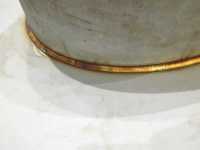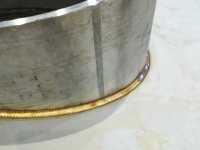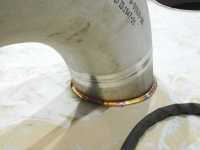Stainless Steel Welding Applications
In stainless steel welding, there are many parts of the process that are critical to maintaining the stainless steel’s integrity and corrosion resistance. Choosing the proper filler metals and joint preparation is all-important to welding, but those two items are easily controllable.
The other major critical point to consider when welding steel is the welding process itself. Too much heat or rapid heating and cooling can compromise the integrity of the metal and the corrosion-resistant qualities of the stainless. The process of welding steel is very specialized and must be performed by an experienced welder, that is unless you have a TIP TIG machine.
View A Stainless Steel Welding Case Study
The regular TIG stainless steel welding process has provided the lowest manual weld deposition rates and slowest weld speeds, making welding steel much harder than normal steel. Speeding up the TIG welding process, while still retaining the same weld quality requirements, was not possible before TIP TIG.
The key to achieving the highest energy agitated welds producing the highest possible weld quality at a speed much faster than traditional TIG is TIP TIG’s revolutionary high-speed oscillation of the filler wire. Now that the process has sped up, TIP TIG welding consistently enables the lowest possible weld heat while still retaining the best mechanical and corrosion-resistance properties.
WATCH TIP TIG HOT WIRE STAINLESS VESSEL
WATCH TIP TIG HOT WIRE STAINLESS FILLET 2mm
WATCH TIP TIG HOT WIRE STAINLESS PLATE
TIP TIG 14 gauge Stainless Steel Welding. TIP TIG 14 gauge weld travel rate is approx. 48 inch/min. The 14 gauge weld in the video would typically be made on steels and alloy gauge parts 0.070 to 1/8, (1.8 – 3 mm). That fillet weld length in the video is approx. 12 inch (30 cm) long. Regular TiG weld travel rates on parts like this would be in the range of 5 to10 inches/min.
The TIP TIG weld speeds on this gauge stainless part were 48 inches/min. With TiP TiG, the welder does not have to feed a welded wire or operate a foot control which dramatically reduces the TIG skills. As you can see in the videos, the TIP TIG welder can focus strictly on the weld and use one or two hands to guide the torch in which the welding wire is consistently fed into the optimum arc position directly under the tungsten tip. With all manual TiP TiG welds, you should note the weld continuity and uniformity (like automated welds) that comes from the constant fed smaller weld wires.
TIP TIG produces the lowest possible weld heat which means you should attain the smallest possible weld HAZ, the lowest possible distortion, no spatter, and always that unusual, untouched weld cleanliness. On all stainless steel welding applications, while we are welding at MIG weld speeds, we have no visible Hexavalent Chrome fumes and no weld spatter..




